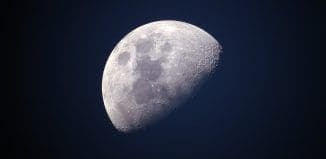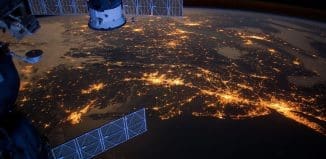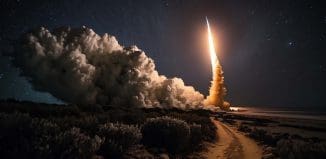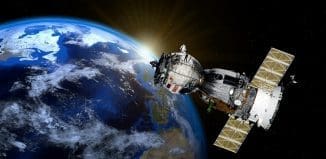Can we get ready to counter threats from space?
This post is also available in:  עברית (Hebrew)
עברית (Hebrew)
לעברית לחץ כאן
.
 Can a country be ready for threats from space? this issue has been brought up following the “close” passage of an asteroid on Feb. 15 and the casualties and damage caused by debris from a meteorite in Russia,
Can a country be ready for threats from space? this issue has been brought up following the “close” passage of an asteroid on Feb. 15 and the casualties and damage caused by debris from a meteorite in Russia,
In the u.s the chairman of the House Science, Space, and Technology Committee, and who is also a member of the homeland security committee, said he plans hearings on threats from space.
A meteor that space experts said was 50 feet in diameter was travelling more than 30,000 miles per hour before it exploded with the force of a small nuclear bomb miles above the Russian city of Chelyabinsk in the Ural mountains. The shock wave from the titanic blast shattered thousands of windows, which injured hundreds of people on the ground. It also knocked down the walls of several buildings in the area. What was left of the meteor was believed to have landed in a frozen lake near the town.
According to GSN website in the u.s the Near-Earth Object Program Office at the Jet Propulsion Laboratory in Pasadena, CA, said the object weighed between 7000 and 10,000 tons. The same day, astronomers and satellite owners watched Asteroid 2012 DA14 pass just 17,000 miles from Earth, posing a small, but potential threat to some satellites. The asteroid, nearly the size of a football field, was the biggest yet recorded to skim so closely to Earth.
Such intense, spectacular astronomical activity in such a short time, said Science, Space, and Technology Committee Chairman Lamar Smith (R-TX) on Feb. 15 was “a stark reminder of the need to invest in space science.” Smith also sits on the House homeland security committee.
Smith said the science and space committee will hold hearings in the coming weeks to look at ways to better identify and address asteroids that pose a potential threat to Earth.
“Developing technology and research that enable us to track objects like Asteroid 2012 DA14 is critical to our future,” he said on Feb. 15. “We should continue to invest in systems that identify threatening asteroids and develop contingencies, if needed, to change the course of an asteroid headed toward Earth.”
“Fifty years ago, we would have had no way of seeing an asteroid like this coming. Now, thanks to the discoveries NASA has made in its short history, we have known about 2012 DA14 for about a year. As the world leader in space exploration, America has made great progress for mankind. But our work is not done. We should continue to study, research, and explore space to better understand our universe and better protect our planet.”
The Russian meteor was a once-in-a-century occurrence, according to Paul Chodas of NASA’s Near-Earth Object Program Office at the Jet Propulsion Laboratory in Pasadena, CA. “When you have a fireball of this size we would expect a large number of meteorites to reach the surface and in this case there were probably some large ones.”
However, Chodas and other experts said the spectacular meteor and the passing asteroid were unrelated. “The trajectory of the Russia meteor was significantly different than the trajectory of the asteroid 2012 DA14, which hours later made its flyby of Earth, making it a completely unrelated object.
The Russia meteor is the largest reported since 1908, said JPL, when a meteor hit a remote area near Tunguska, Siberia, exploding just above the surface with the force estimated at 1,000 times the nuclear bomb dropped on Hiroshima. The explosion knocked down almost 100 million trees in an 830 square mile area.
Some scientists even hinted that technology developed to defend frmo ballistic missiles should be used to counter these threats from space .




























